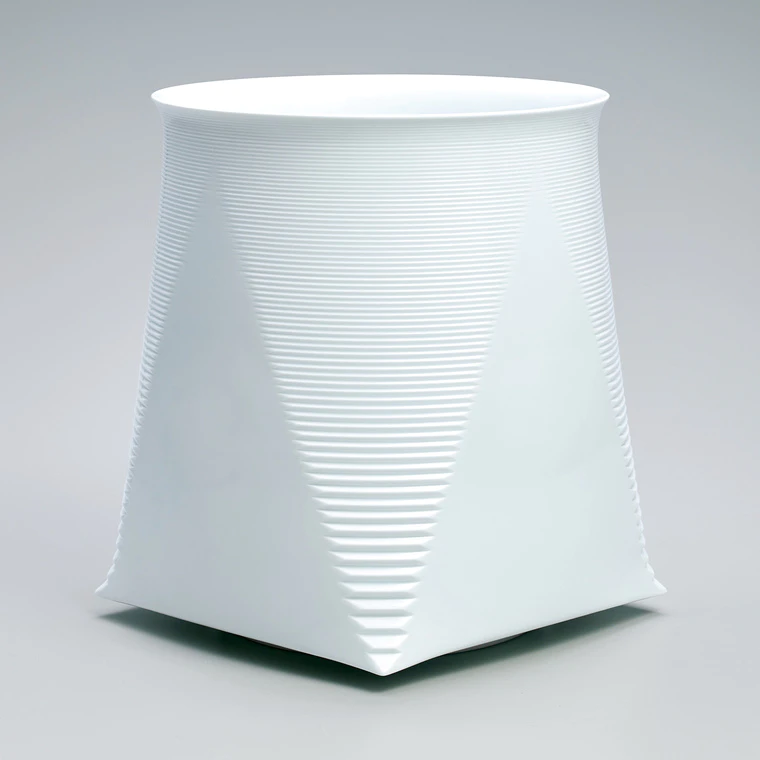White Porcelain Square Vessel with Frozen Water Design
H 27.5 x W 30.0 x D 30.0 cm,Year.2022- according to today's currency rate
- shipping fees not included
Tomohiro Kitagawa
1967 -- Ceramics
-
Price Range
Under $3,500
Info
The prices of the artworks on Gallery Japan are determined by the artists themselves and are published directly on the website.
close
About the Artwork
1. "Frozen Water" in the title means the movement of water turning into ice and ice turning into water.
I thought of using the frozen water patterns to take advantage of the characteristics of the porcelain material, and from the thought that I was making my artwork in a snowy area, Hokkaido. In this series, I used icicles as the motif and tried to make a sharper and new form.
Icicles become fatter and longer as water slides down the surface in the cold, and small bumps and dips like bamboo knots are formed. In this piece, I didn't express the melting ice, but used icicles freezing and becoming longer as the motif.
2. About the form
On the outer side of the vessel, I tried to transfer the "face" without any shadows to the "lines" with shadows naturally.
In the same way, by chamfering the vessel with a four-sided bottom to three sides, engraving lines, naturally transferring to the roundness in the upper side, and finally bending the mouth of the vessel outwards, I transferred back from the "lines" to the "face" again with the top spreading towards the sky.
Description
-
CategoryCeramics
-
MaterialsPorcelain clay
-
DimensionsH 27.5 x W 30.0 x D 30.0 cm
-
Year presented2022
-
RarityUnique
Techniques Used
White porcelain
White porcelain is made from a pale clay of pulverized pottery stone coated in a transparent glaze. Porcelain from China’s Song dynasty is especially famous. Japanese production began in the early seventeenth century in Arita on the island of Kyushu. White porcelain is frequently used as a base for overglaze enamels (iro-e) and blue-and-white (sometsuke) ware.
Selected exhibitions
- The 62nd East Japan Traditional Kōgei Exhibition (2022)
- Selected

